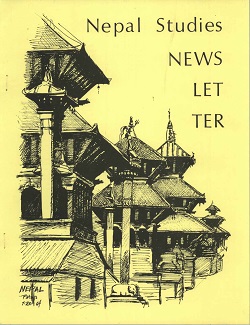Author Biography
Emma Martin (PhD, History of Art and Archaeology, SOAS University of London, 2014) is Head of Ethnology for National Museums Liverpool and Lecturer in Museology at the University of Manchester. She recently completed her PhD on the collecting practices of the Sikkim based Political Officer, Charles Bell and she has published several articles and book chapters on Bell and the wider Anglo-Tibetan encounter; paying attention to diplomatic gift exchange, circulation and inventory. She will curate the exhibition Tibet: Dreams and Realities in 2016/17 which will focus on the many historical and contemporary imaginings of Tibet in the gallery and museum space.
Abstract
The uncertainties of the British empire came to the fore during cultural encounters. When material things became a momentary focus - especially those entangled in much larger diplomatic events – how to negotiate them very often resulted in a series of question marks in the Foreign Department files. These micro-narratives of empire, especially those played out in the Himalayan borderlands of British India reveal a less than omnipotent imperial project. Following the flight into exile of the thirteenth Dalai Lama in February 1910 this paper will trace out one tangible way in which the British renegotiated their 300 years of accumulated diplomatic ‘grammar’. Using the arrival at state level of the khatak, a specifically Himalayan piece of material culture, we will witness the recoding of diplomatic protocols made for cultural encounters in plains India. Colonial archives make it possible to gain some insight into how the British and their Persian derived diplomatic nomenclature attempted to make sense and interpret these new material encounters and exchanges taking place on the edge of imperial influence and understanding. An exchange does of course require both a giver and a receiver, so this paper will also weave in khatak-related Tibetan sources, which make it clear that this scarf already had multiple meanings tied to it and that the Tibetans renegotiated their own diplomatic “grammar” while exiled from their power base in Lhasa.
Acknowledgements
Special thanks go to Mr Tashi Tsering, Director of Amnye Machen Institute, Dharamshala, for taking up the challenge and finding the majority of the Tibetan sources noted here. Discussions with him on the biography of the thirteenth Dalai Lama and its lack of reference to documentation or diaries written during the lama’s 1910-12 exile were also invaluable. In addition, thanks to Mr Sonam Tsering, Columbia University for his sensitive translation of the Tibetan sources. Furthermore, the financial support of the Frederick Williamson Memorial Fund, the University of London, Central Research Fund and National Museums Liverpool made possible the doctoral archival research, which, in part, this paper is taken from.
Creative Commons License

This work is licensed under a Creative Commons Attribution 4.0 License.
Recommended Citation
Martin, Emma. 2016. Gift, Greeting Or Gesture: The Khatak And The Negotiating Of Its Meaning On The Anglo-Tibetan Borderlands. HIMALAYA 35(2).
Available at:
https://digitalcommons.macalester.edu/himalaya/vol35/iss2/10


